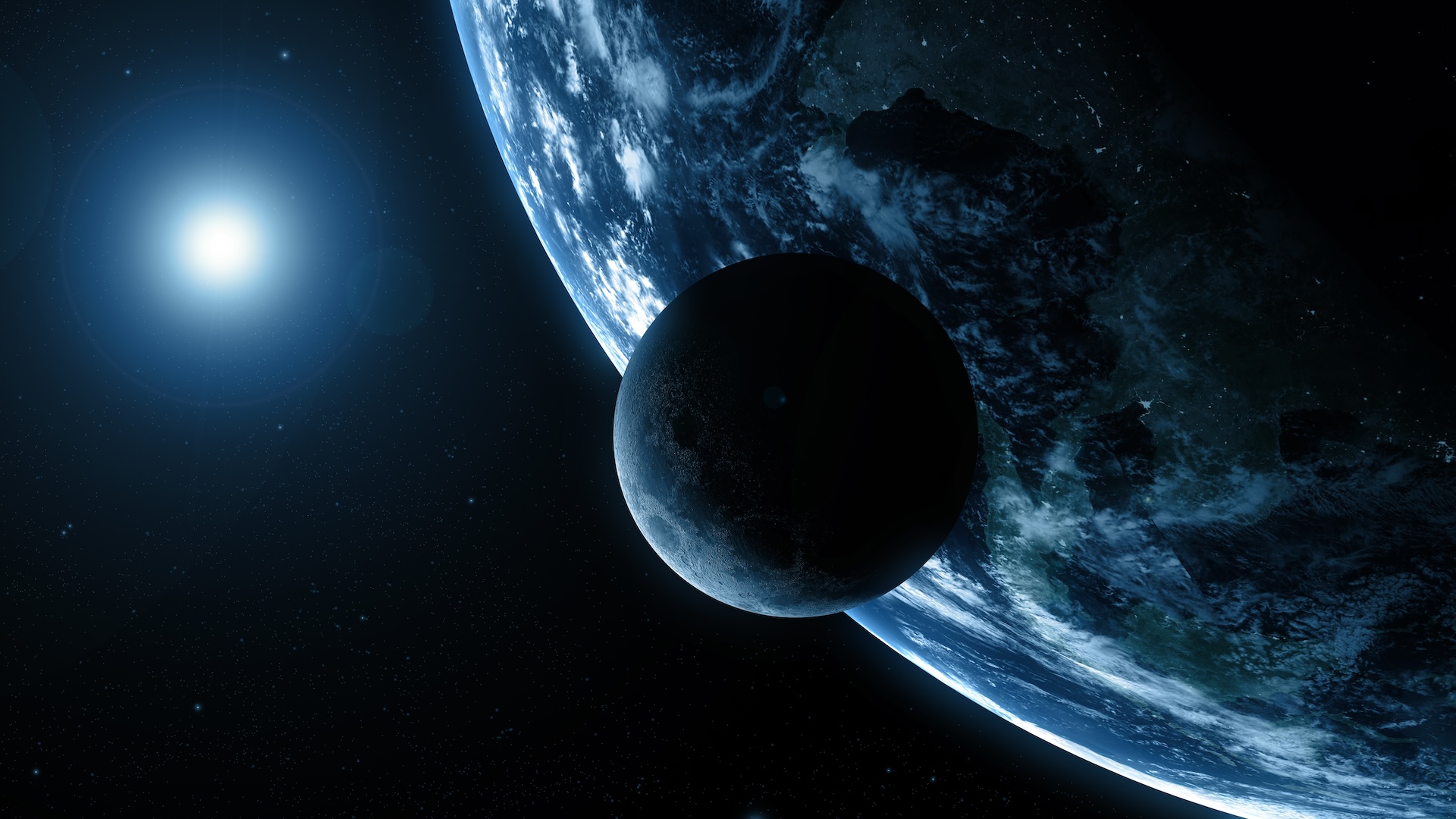
Earth's days once got more than two hours longer, thanks to the moon drifting thousands of miles farther away in its orbit over two periods, researchers have discovered.
The extra hours of sunlight, in turn, may have led to oxygenation events that ushered in a period when life's complexity exploded, the study researchers say.
"Daylength changes may influence the distribution of solar energy and temperature gradients, potentially impacting weather systems and atmospheric dynamics," the researchers wrote in the new study, published Aug. 6 in the journal PNAS.
Nowadays, the moon orbits at an average of 238,855 miles (384,400 kilometers) from Earth. But our satellite hasn't always been where it is now.
Related: Earth is wobbling and its days are getting longer — and humans are to blame
Earth's days are currently around 24 hours long, but that wasn't always the case. Over time, the moon tugs on our planet. As it does so, it migrates away from Earth, siphoning away its kinetic energy. As a result, our planet's spin around its axis slows, thus lengthening Earth's days, according to the study.
Modeling changes in how Earth wobbles as it spins can give a rough picture of this slowdown over the planet's history. But this estimate is clearly flawed, because it leads to a prediction that Earth and the moon would have collided around 1.5 billion years ago, the study authors noted.
Sign up for the Live Science daily newsletter now
Get the world’s most fascinating discoveries delivered straight to your inbox.
In the new study, a team led by geologist He Huang from the Chengdu University of Technology in China, tried to clarify Earth's spin history by looking at eight datasets that captured rock layers from marine environments dating to roughly between 700 million and 200 million years ago. These tidalites, as they're called, can record the strength of the tides over time, in part because they reveal the ocean's thickness. The team combined these datasets with models of the tidal forces acting between the moon and Earth to map how quickly Earth spun around its axis over the half-billion-year study period.
The researchers found that there was a "staircase" pattern in Earth's spin, with two periods where the planet's rotation quickly and dramatically changed, followed by periods of stability. Over the study period, days got 2.2 hours longer. The moon, during this period, also got an average of 12,000 miles (20,000 km) farther away.
One of these time periods, roughly 650 million to 500 million years ago, encompassed the Cambrian explosion, a period when life diversified dramatically and radiated into new niches. The second "step" in the staircase of Earth's spin occurred roughly 340 million to 280 million years ago, which corresponded to a period when massive glaciers covered the planet.
The study suggests that by increasing the day length — and, therefore, sun exposure — the moon may have triggered great oxygenation events that led to life's diversification. However, those results "need to be interpreted with care," the authors wrote in the study.
The study also casts doubt on another theory: that a period when glaciers rapidly covered Earth, leading to a mass extinction, had a big effect on Earth's spin. Rather, most of the slowdown is caused directly by tidal forces, they suggested.
Editor's Note: This story was corrected at 1:15 p.m. E.D.T. on Saturday, Aug. 17 to note that the moon's distance from Earth, and the length of days, increased relative to their starting point by around 2 hours during two periods; the days were not 2 hours longer than they are now.

Tia is the managing editor and was previously a senior writer for Live Science. Her work has appeared in Scientific American, Wired.com and other outlets. She holds a master's degree in bioengineering from the University of Washington, a graduate certificate in science writing from UC Santa Cruz and a bachelor's degree in mechanical engineering from the University of Texas at Austin. Tia was part of a team at the Milwaukee Journal Sentinel that published the Empty Cradles series on preterm births, which won multiple awards, including the 2012 Casey Medal for Meritorious Journalism.









